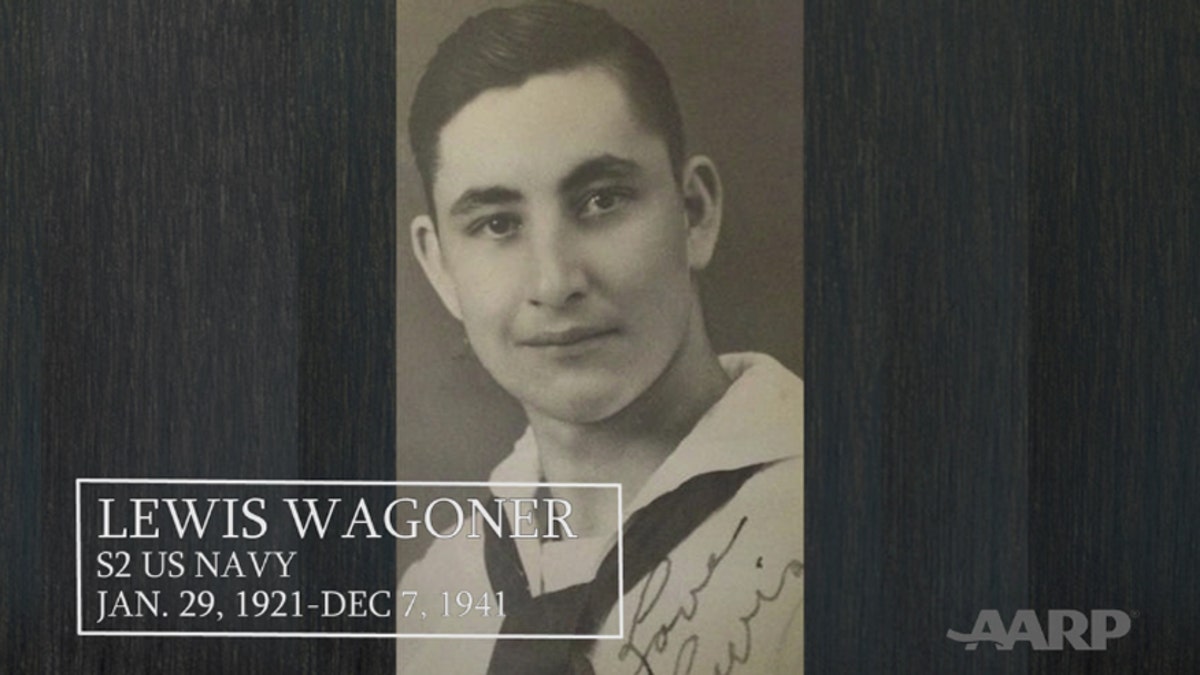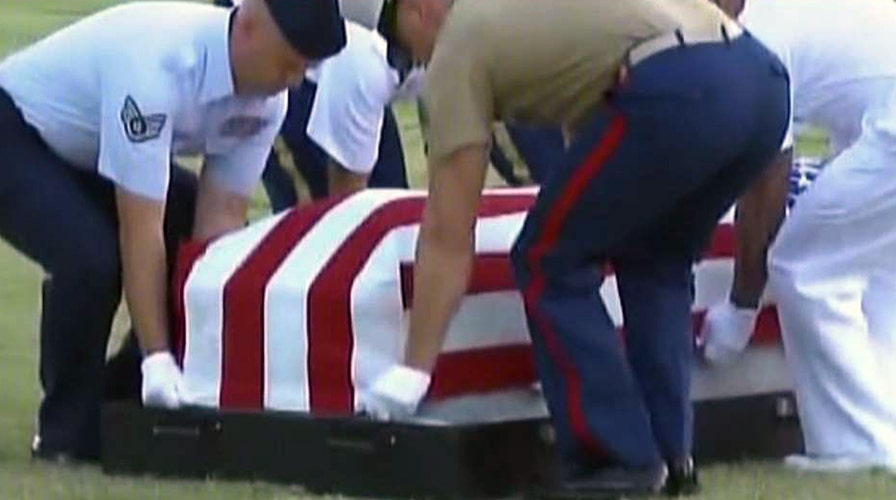Laid to rest: World War II sailor finally returns home
Trace Gallagher reports from Pearl Harbor, Hawaii
After decades of Pearl Harbor anniversaries, the family of Lewis Wagoner says this one will be more special than the rest.
The Navy Seaman 2nd Class, one of the 429 onboard the USS Oklahoma who died during the Dec. 7, 1941, attack, is finally with his family in Kansas as his long-unidentified remains were tracked down and buried in October.
“We were so grateful that at last, after 75 years, that our uncle… and all of the whole family was just so excited that finally his remains had been brought home to rest,” Lee Longaker, Wagoner’s niece, told FoxNews.com.
The story of Wagoner, who was 20 years old when he died at Pearl Harbor, is featured in a video produced by AARP to be released on Wednesday’s 75th anniversary.
Born in 1921, Lewis Wagoner was one of eight boys growing up on his family’s farm in Whitewater. As a young child, he loved singing in his school’s glee club and participating in sports like football, basketball and track and field, his nephew Mark Wagoner said.
Around 10th grade, Lewis left school and stayed home to work with his dad on the family's farm, before joining the Navy and completing boot camp. He then was assigned to the USS Oklahoma and went to Hawaii, where he was stationed for war games in the Pacific.

Lewis Wagoner (AARP)
From the day of the attack until 2015, his family never again knew the exact whereabouts of Lewis.
As the ship was taking enemy fire from the Japanese, Wagoner jumped off the USS Oklahoma into fiery waters filled with oil and fuel, a shipmate who survived the attack said, according to Longaker. The shipmate had told the family that Lewis did not come back up from the water.
In the aftermath of the attack, Wagoner’s remains eventually were recovered and buried in Hawaii along with hundreds of other unidentified men from the ship.
FULL COVERAGE OF THE 75TH ANNIVERSARY OF THE PEARL HARBOR ATTACK
Longaker told FoxNews.com that her family visited the National Memorial Cemetery of the Pacific in Oahu in 2011 and was told by the government there was a possibility that Wagoner was buried there.
“It was hard to see the unidentified headstones of these mass graves because they are people, they are a person, they are someone who is a member of a family -- someone’s daughter or son,” she said in the AARP video. “I was glad to see there was something, but it was still empty as far as who is really there.”
In the coming years, Longaker said her father made many phone calls and sent letters to the government to find out where they stood in terms of identifying Wagoner’s remains.
"I’ve always thought about Lewis, he’s always been on my mind and it seemed like I could see him, I could see his body and remember it.”
The breakthrough they were hoping for came in June 2015.
Using modern forensic techniques to exhume the unidentified graves, the Defense POW/MIA accounting agency was able to identify Wagoner’s remains with the help of DNA from the father of Lorna Davis, one of his nieces.
Wagoner's remains are one of the 59 sets that have been identified so far out of the 388 from the USS Oklahoma that have been dug up, Staff Sgt. Kristen Duus of the Defense POW/MIA accounting agency told FoxNews.com.

AARP (Lewis Wagoner's grave at Harvey County's Whitewater Cemetery.)
The agency hopes to identify 80 percent of the 388 sets by 2019.
“There are other countries that don’t do this and they can’t understand why our country does this,” Davis said in the AARP video. “That just makes me proud that our country is willing to remember the people who have served.”
In early October, Wagoner’s identified remains were flown to Wichita, Kan., and he was given a memorial service with military honors at Harvey County's Whitewater Cemetery. A bronze plaque denoting the Purple Heart that he received was placed on Wagoner’s gravestone, in a family plot.
“I’ve always thought about Lewis, he’s always been on my mind and it seemed like I could see him, I could see his body and remember it,” Carl Wagoner, the only living sibling of Lewis, said in the AARP video.
75 YEARS LATER, VETERANS AND HISTORIANS OFFER LESSONS OF PEARL HARBOR
Lewis’ memorial procession – followed by hundreds of bikers -- was met with a display of red, white and blue in the rural towns of Kansas and “people sitting in wheelchairs waving flags,” Mark Wagoner told FoxNews.com.
“Every little town… they didn’t know him but they knew of him,” Wagoner said. “They would wave and salute.”
Longaker, who described the experience as “once in a lifetime,” says on this Pearl Harbor anniversary, the family feels like they now have closure regarding the saga of Lewis’ remains.
“Our hearts are just more in that place than ever before… because of what has taken place in October.”


